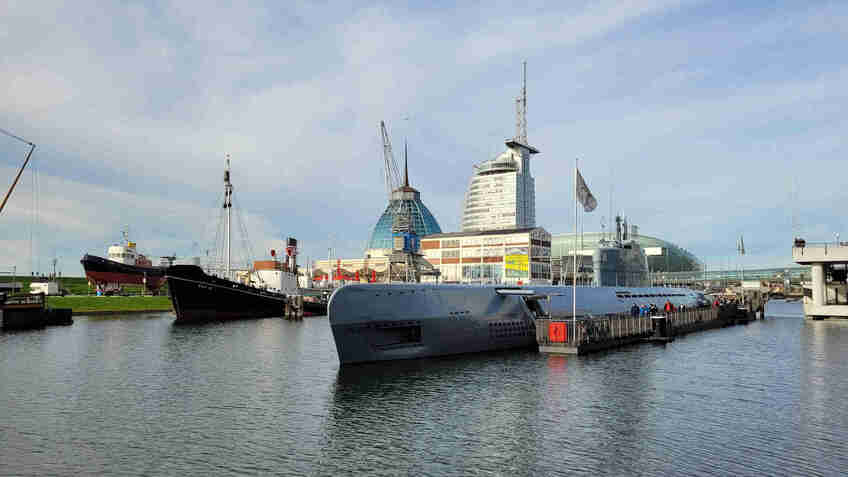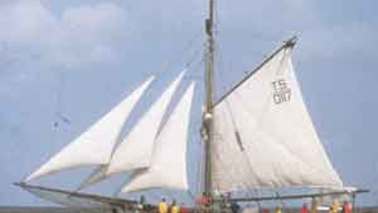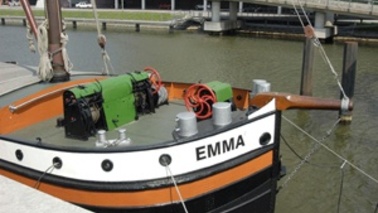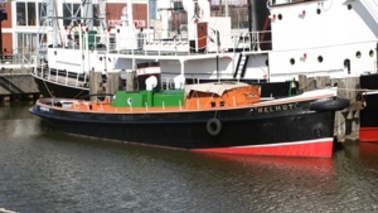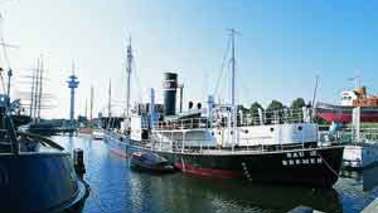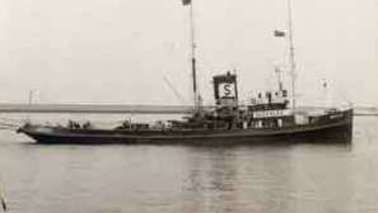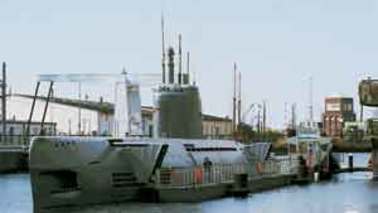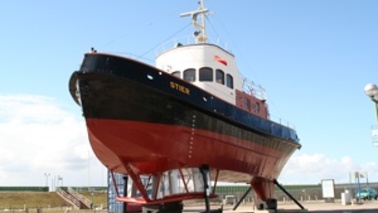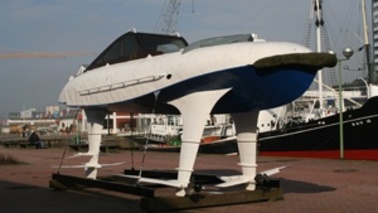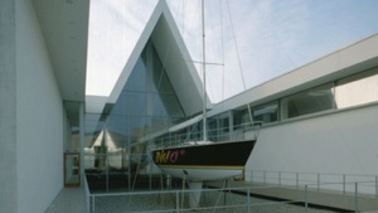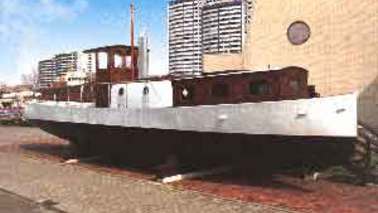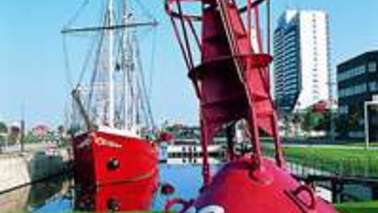
The museum vessels in The Old Harbor
Note: GT: Gross Tons, not a weight, but a measure of capacity (1 GT = 2.83mm³)
1 Knot/kn = 1 nautical mile = 1852 metres
Lightship "BÜRGERMEISTER ABENDROTH"/"ELBE 3" built in 1909 at Eiderwerft, Tönning, 450 GT.
Commissioned by the Prussian government, the vessel was stationed in the Eider estuary (west coast of Schleswig-Holstein) and was moved to the Elbe estuary in 1919, stationed at various locations, finally 1945 to 1966 at ELBE 3 station. Since 1967 moored as a museum vessel at Bremerhaven.
Polar vessel "GRÖNLAND", built in 1867 at Matre near Bergen (Norway), length 25.80 metres.
In 1868, the German captain Carl Koldewey acquired the vessel for a polar expedition to Greenland and Spitzbergen, which took place the same year. In 1871 sold to Norway, the ship later served different owners before she was acquired in 1973. Since then, GRÖNLAND sails for the German Maritime Museum, representing the institution at many different events.
Lagoon barge "EMMA", built in 1928/29 at Pönitz near Stettin, length 41.5 metres
This type of inland barge was used widely on the Baltic coast and on the rivers and canals in the eastern part of Germany. Towed on inland waterways, the ship could use a rigging for sailing in coastal waters. Still used commercially as recently as 1992, EMMA joined the museum fleet in 1994.
Motor tug "HELMUT", built in 1923 at Cäsar Wollheim at Breslau, 345 hp.
This tug was delivered to the famous electrical company AEG and operated on canals in the Berlin region before being sold to a private owner in the East Prussian town of Tilsit in 1928, when it received its present name. After fleeing to the west in 1945, the owner used the vessel in the port of Hamburg and on other waterways in West Germany in the decades following. In 1986, HELMUT was handed over to the German Maritime Museum, from where it still sails occasionally.
Whaler "RAU IX", built in 1939 by Seebeck in Wesermünde, 380 GT
In the 1930s, a short renaissance of whaling occurred in Germany, a nation which had given up traditional whaling in the windjammer age. But now, the margarine company Walter Rau of Neuss commissioned the whale factory vessel WALTER RAU, delivered in 1937 and ten whale catchers (RAU I to X). After the war, RAU IX passed into Norwegian ownership, was later sold to Iceland and then to the Faeroes, before returning to Bremerhaven in 1969. Now the vessel reminds the visitor of a short but interesting chapter of German maritime history.
Salvage tug "SEEFALKE", built in 1924 by Joh. C. Tecklenborg in Geestemünde, 3000 hp.
The diesel powered deep-sea tug SEEFALKE was ordered by the notable German towage and salvage firm W. Schuchmann, based in Geestemünde, Cuxhaven and Hamburg. Operating from various stations for salvage, but also for overseas towage of large objects, the vessel became part of the museum in 1970.
Submarine "WILHELM BAUER", built in 1945 at Blohm & Voss in Hamburg, speed submerged 17.2 knots.
Commissioned as U 2540 by the German Navy, it was a class XXI vessel, whose combined diesel and electric propulsion enabled underwater missions far longer than previously possible. Scuttled in May 1945 by her crew near Flensburg, the boat was salvaged in 1957, repaired at Kiel and placed in commission as an unarmed training and experimental submarine by the Federal German Navy in 1960. Decommissioned in 1982, the submarine came to Bremerhaven in 1984. A private initiative is responsible for its preservation. The large submarine shelter “Valentin” in Bremen-Farge (1944/45) was planned as a production plant for class XXI.
Harbour tug "STIER", built in 1954 at the Jadewerft in Wilhelmshaven, 700 hp.
The most interesting features of this vessel are the two cycloid propellers at the bottom of the hull, replacing a conventional screw and enabling excellent manoeuvrability. In 1977, the German Maritime Museum received the tug and exhibited it outside the museum in 1978.
Hydrofoil "WSS 10", built in 1953 by H.C. Stülcken Sohn in Hamburg, speed 25 knots.
This craft (designed by Prof. Friedrich H. Wendel) was built for trial purposes and used as such from 1953 to 1962 before being donated in 1976.
Racing yacht "DIVA", built of plastic in Ulm in 1985, length 13.27 metres.
In 1985 she won the legendary Admiral's Cup. Donated in 1992.
Concrete vessel "PAUL KOSSEL", built in 1920 in Bremen, length 14.30 metres. Preserved since 1976, the vessel was restored in 1988.

